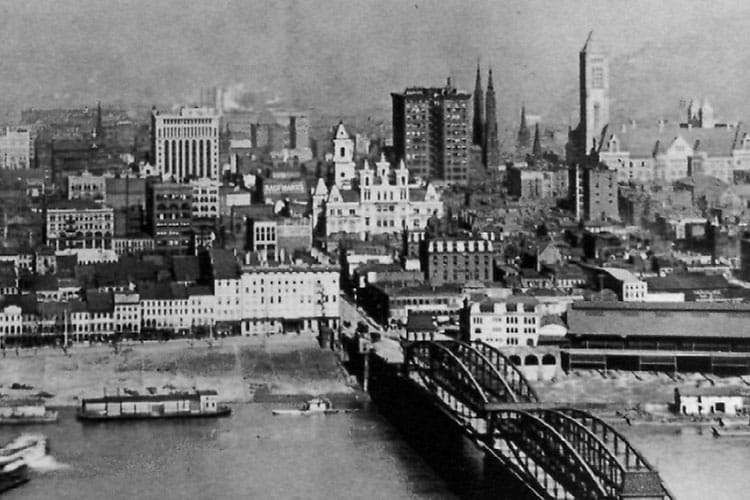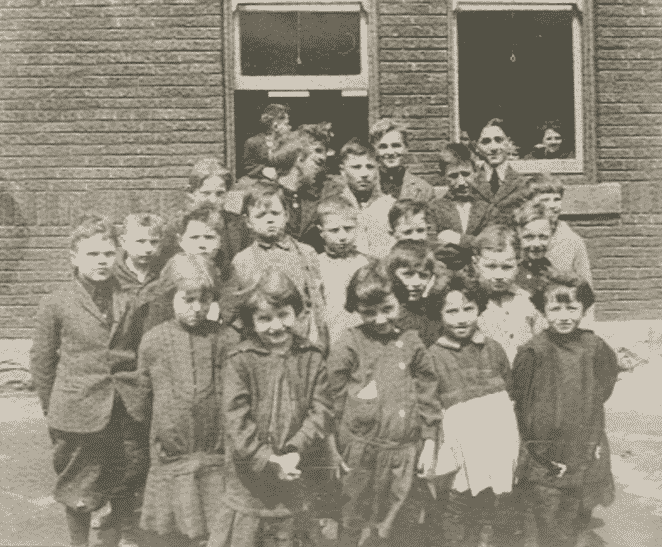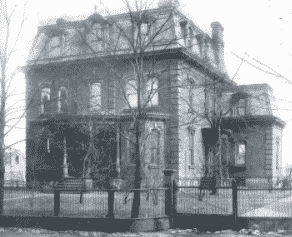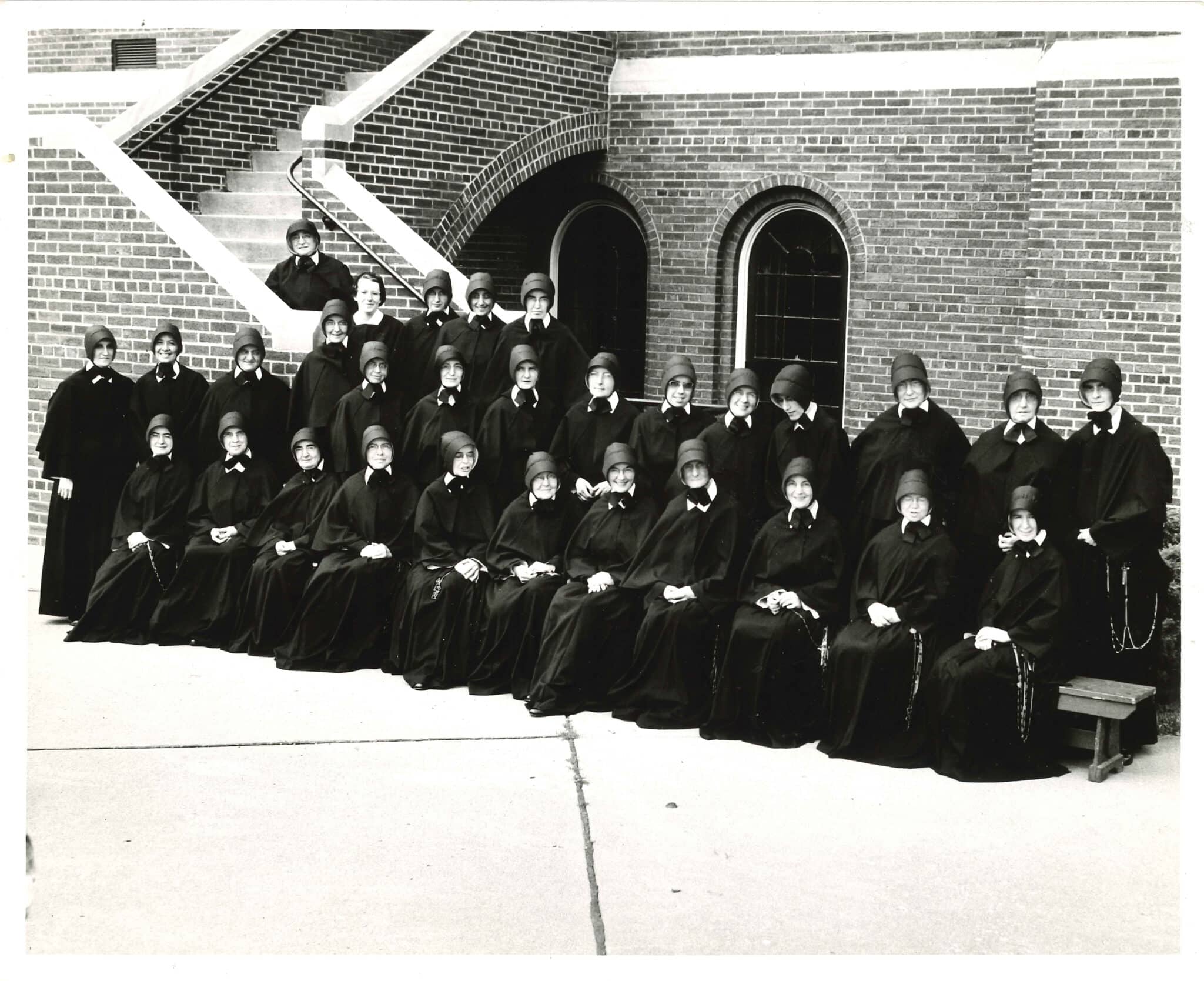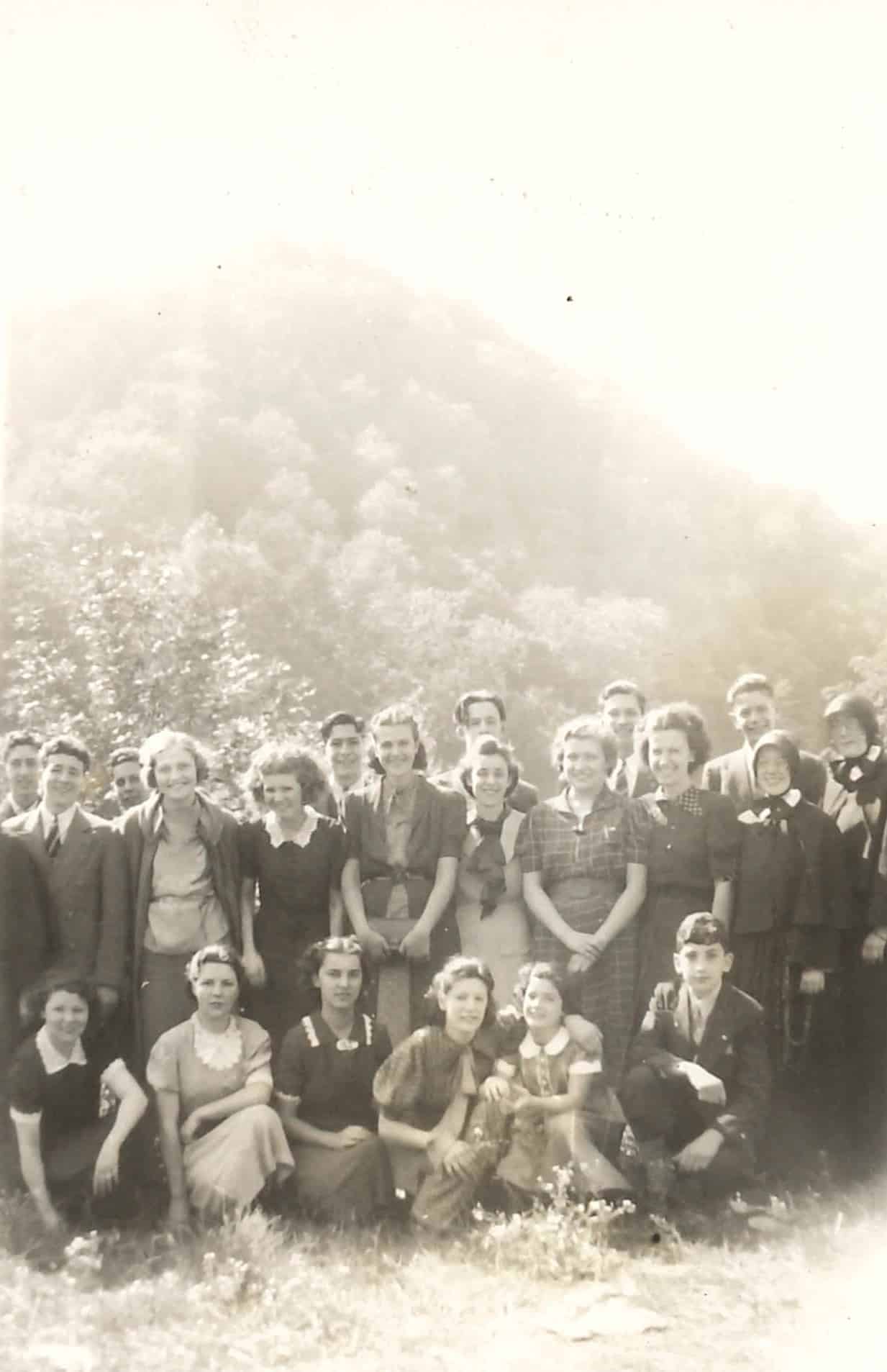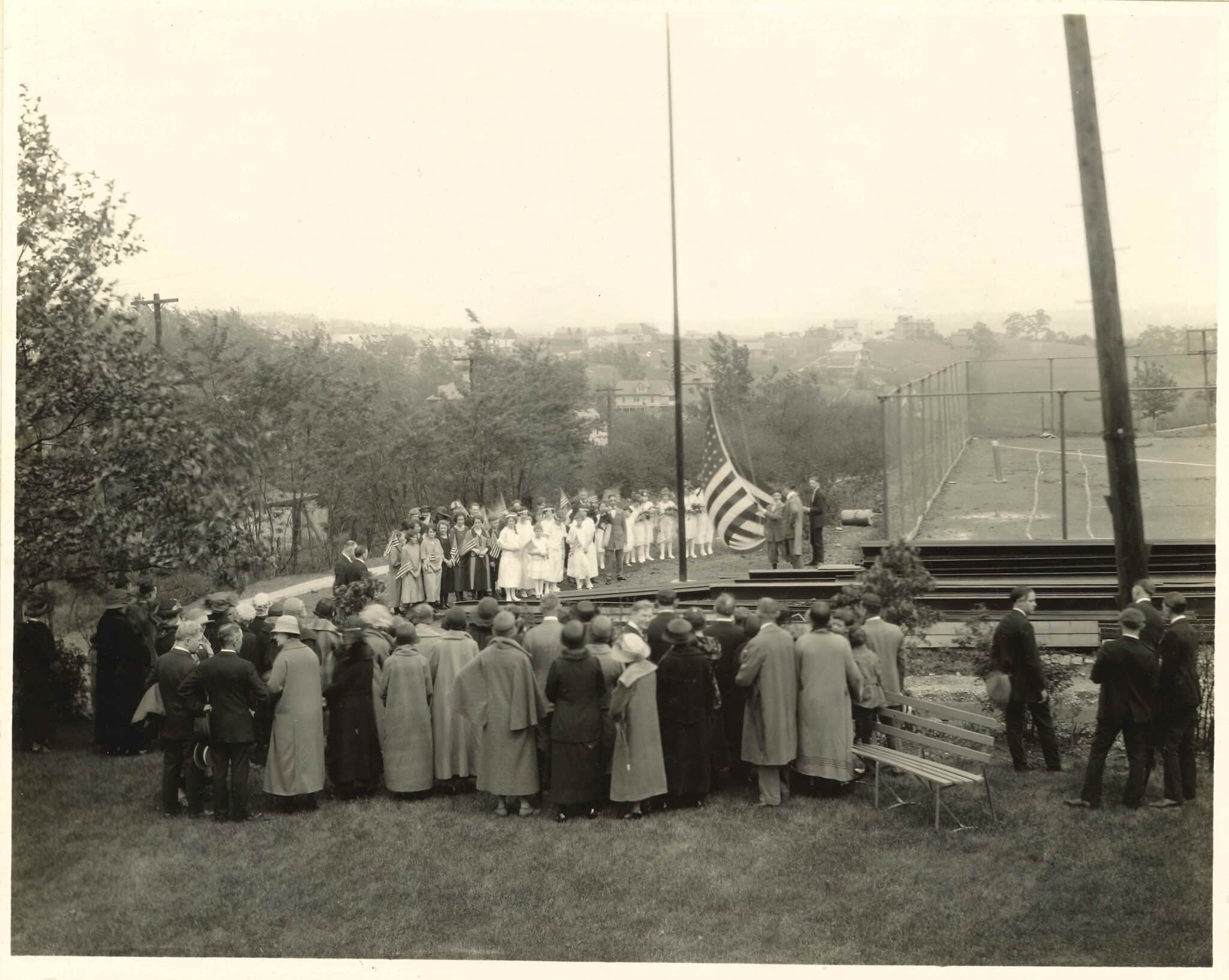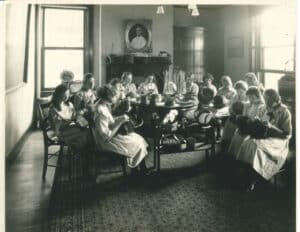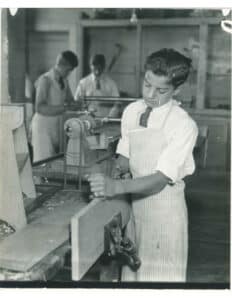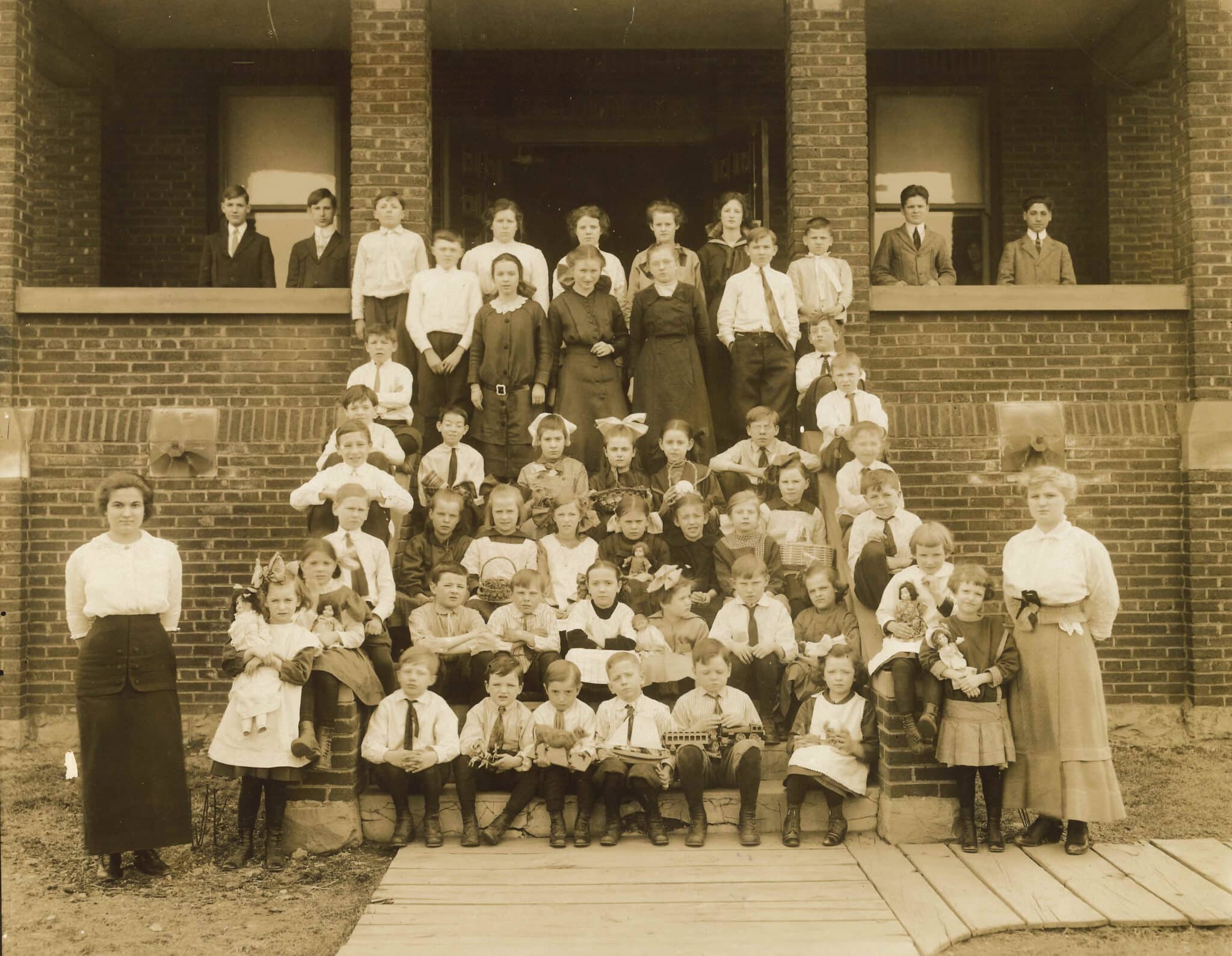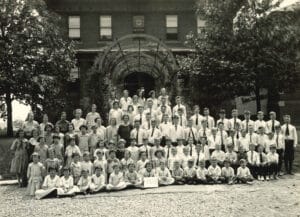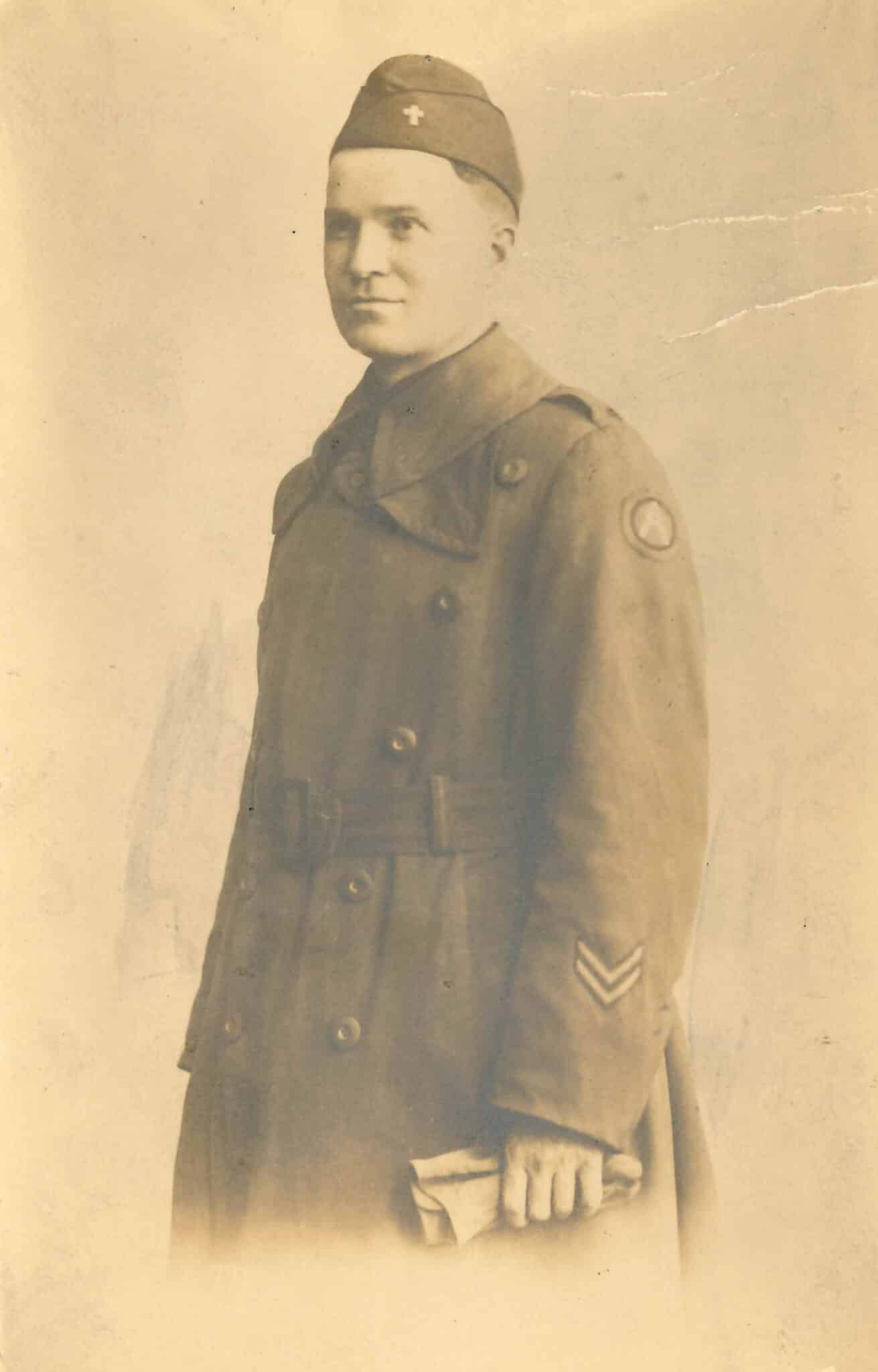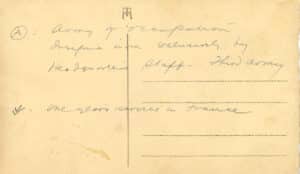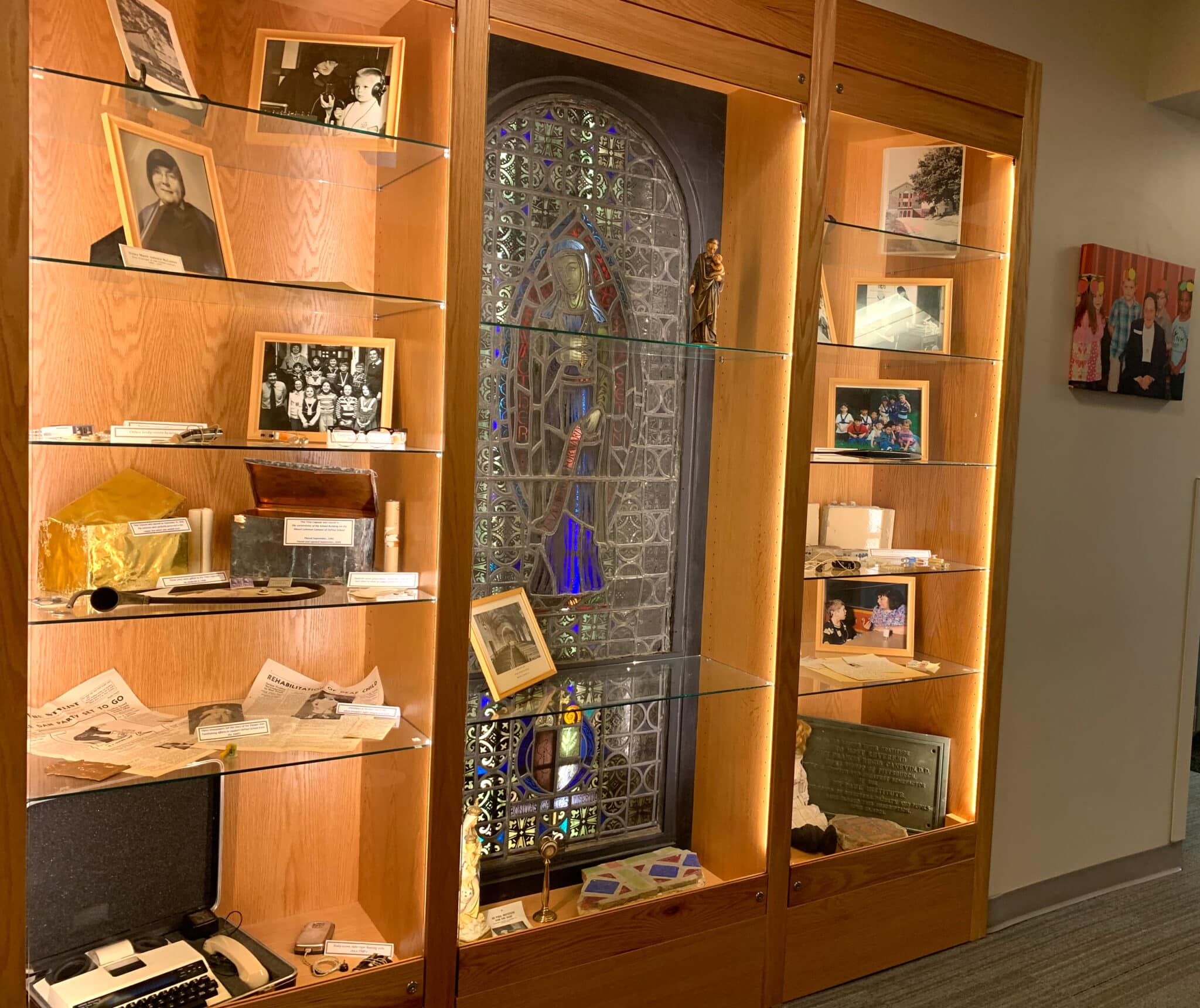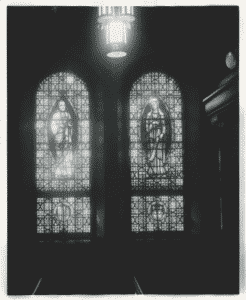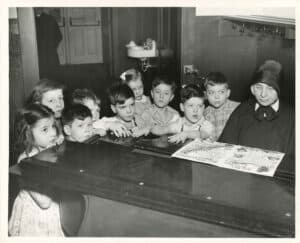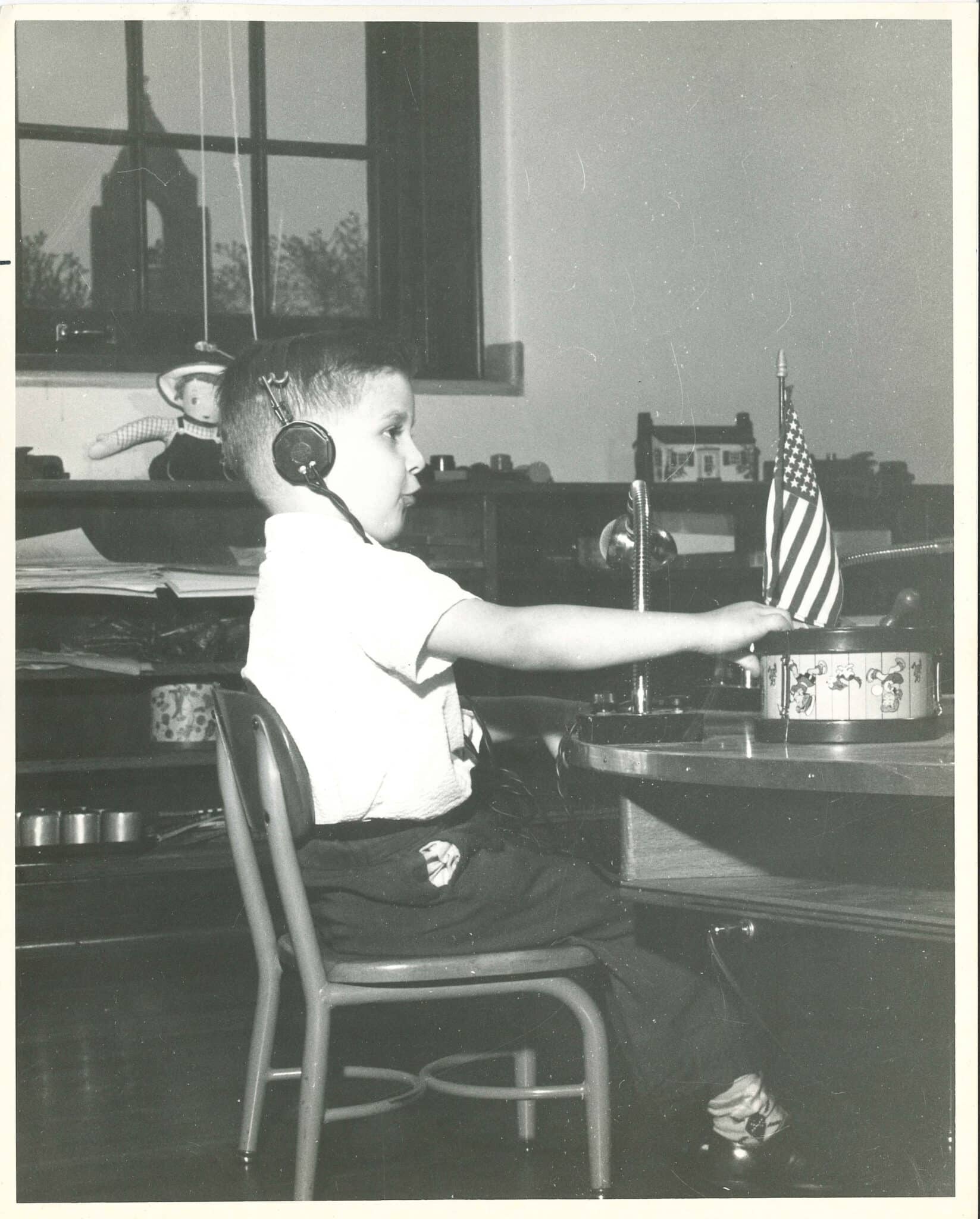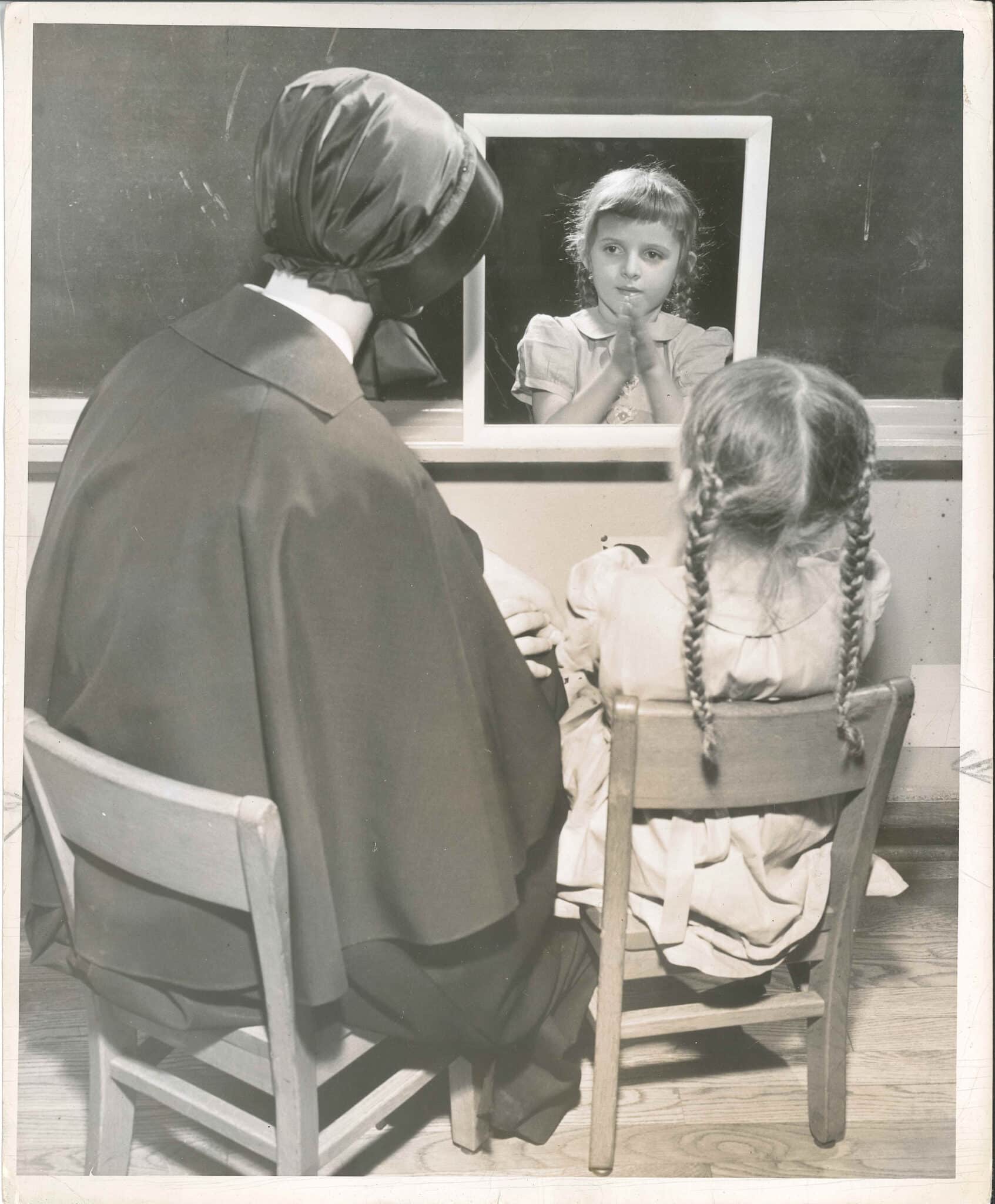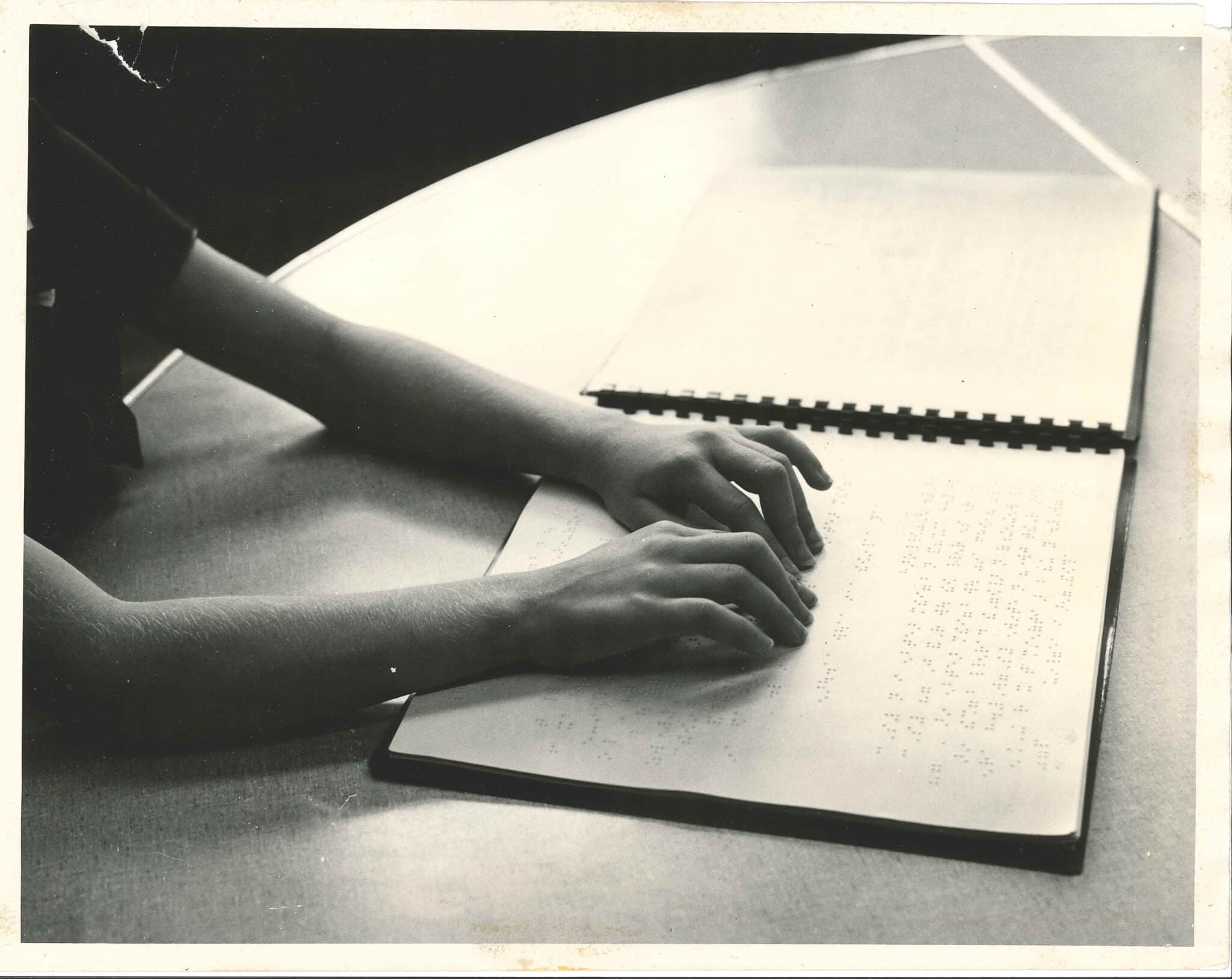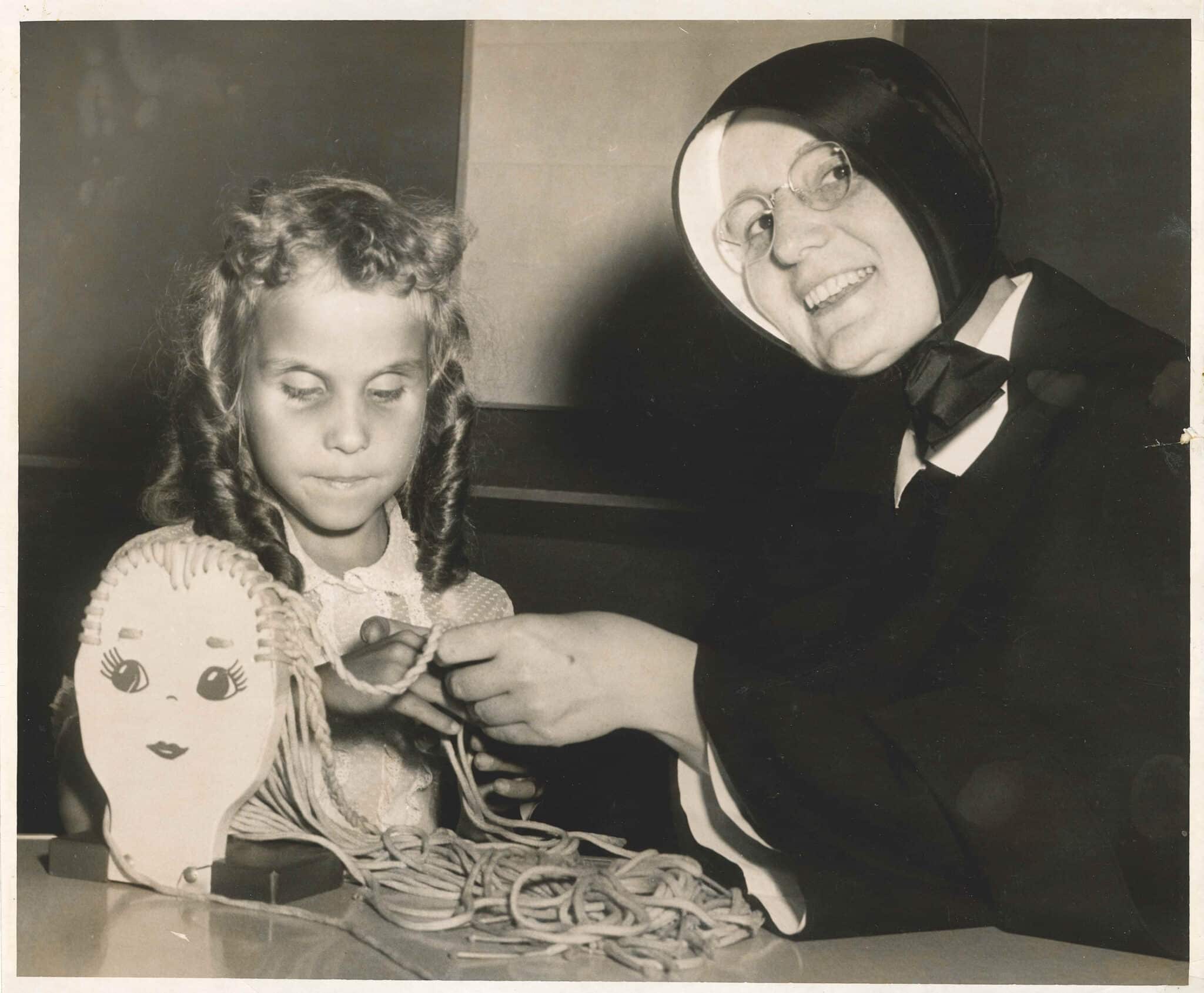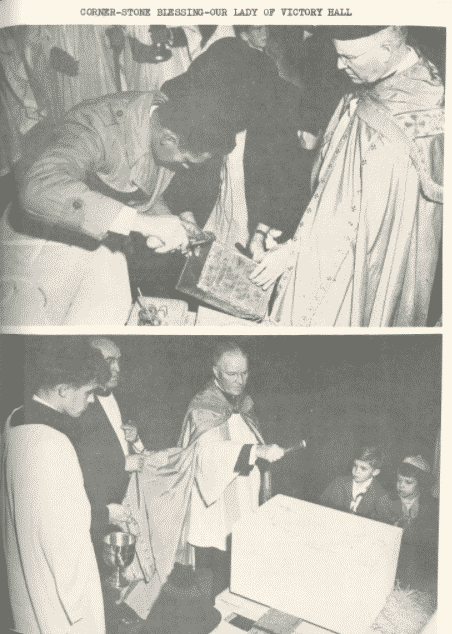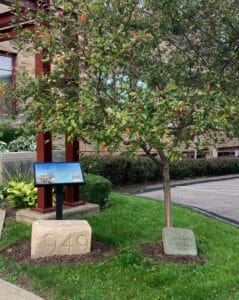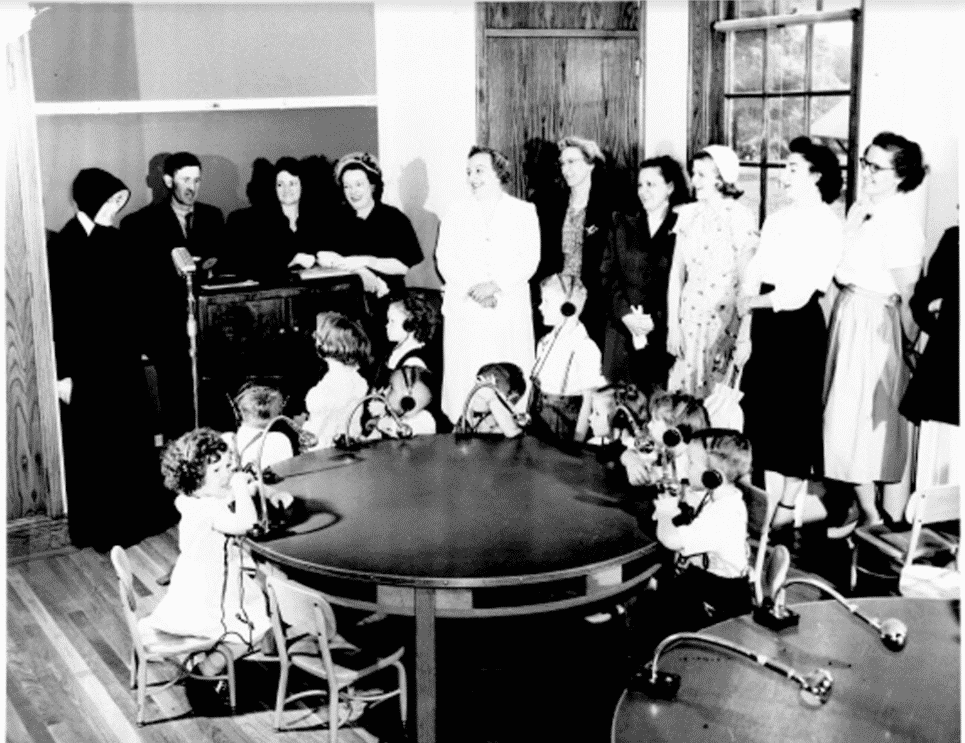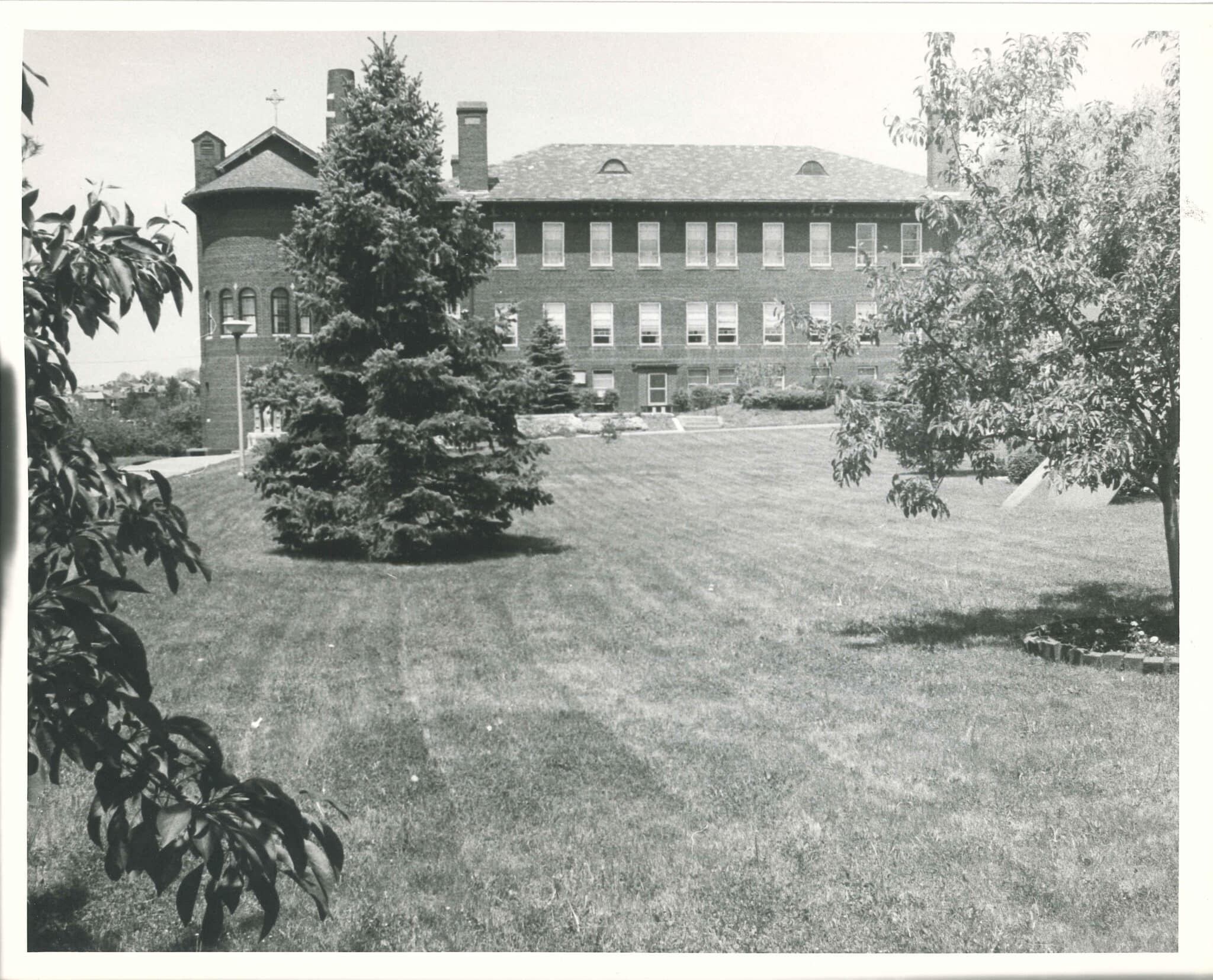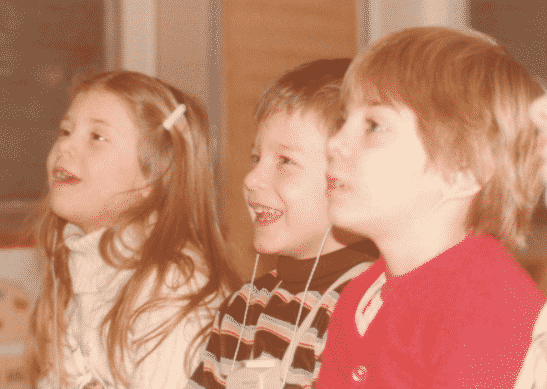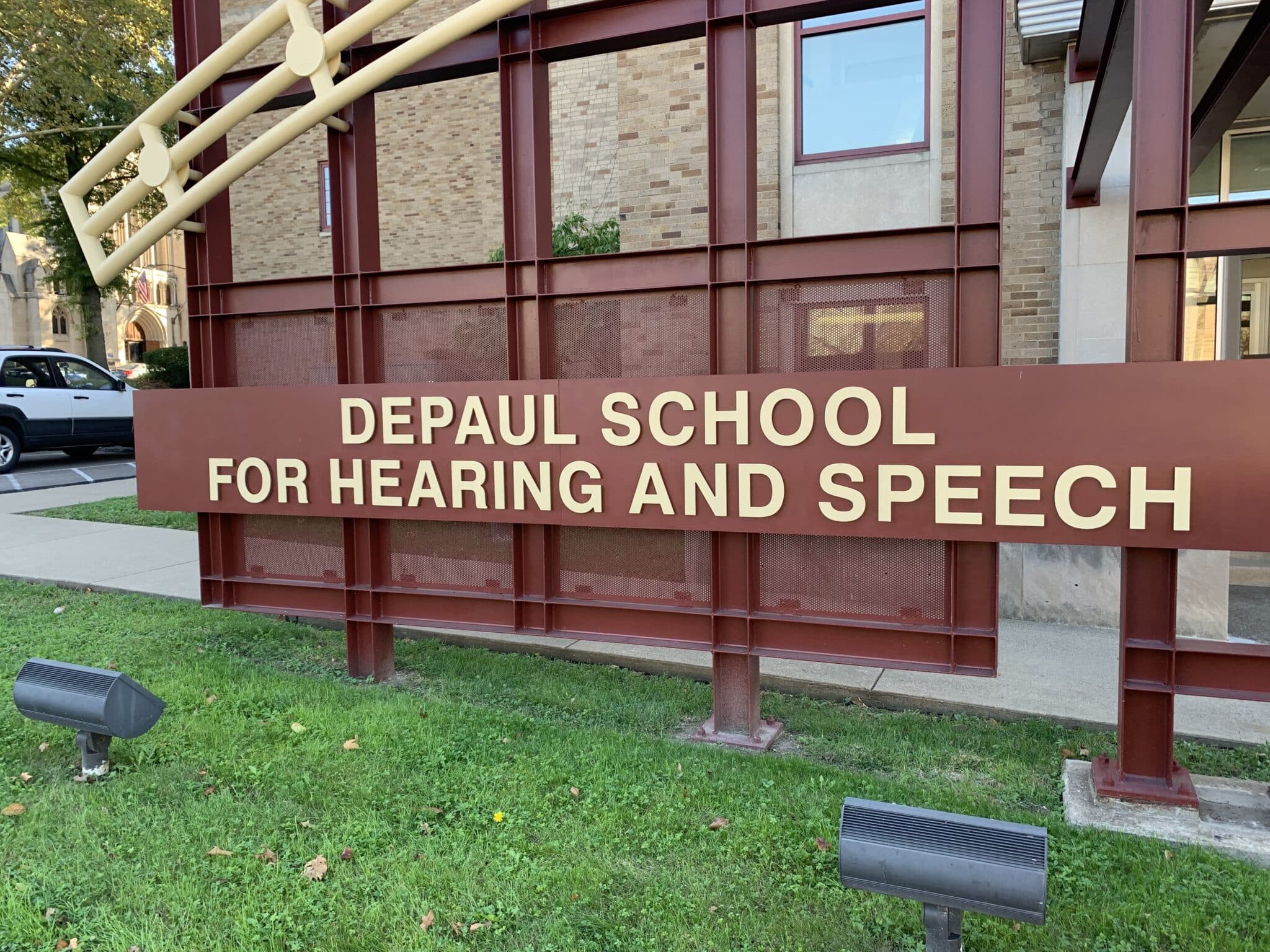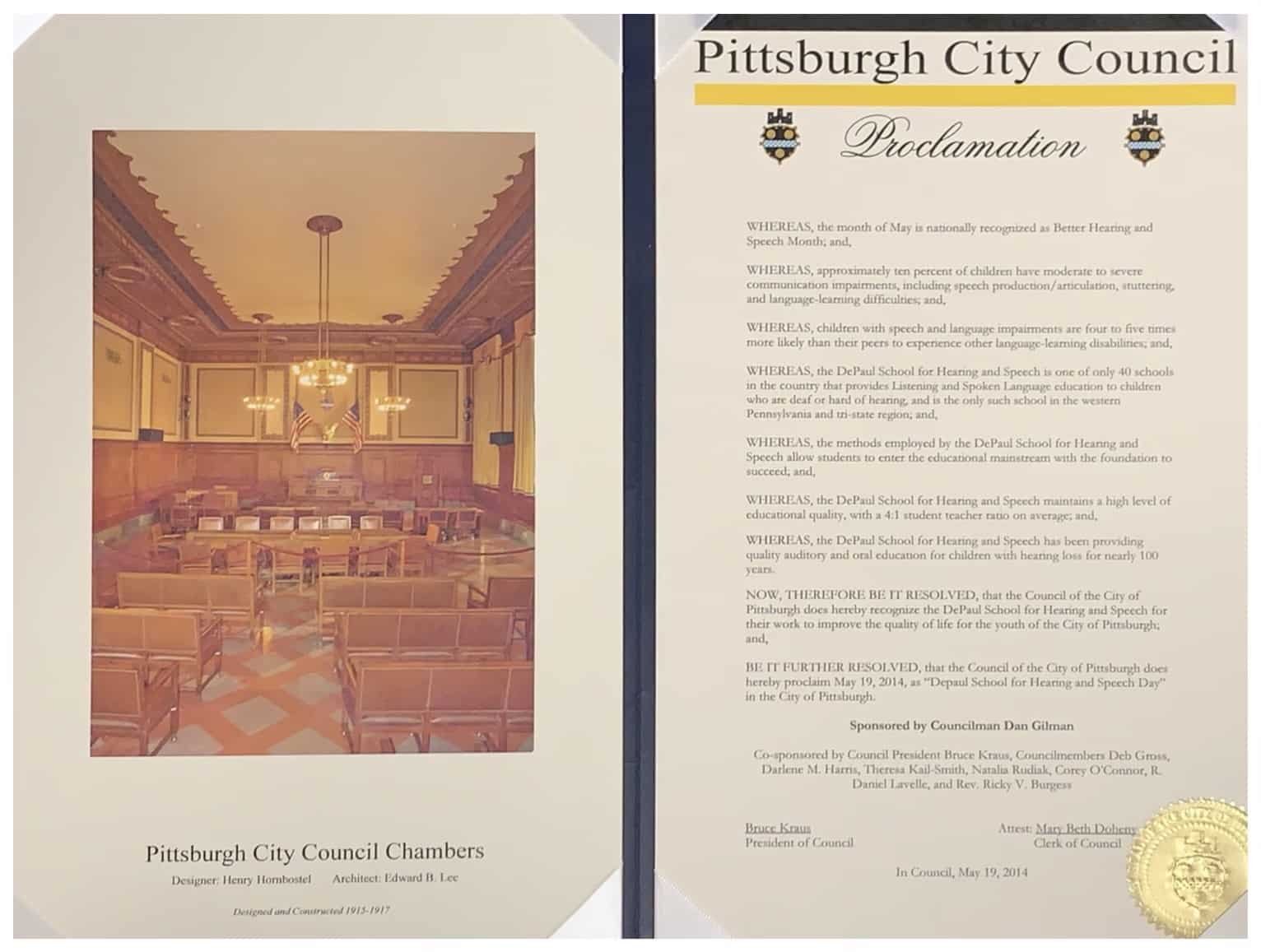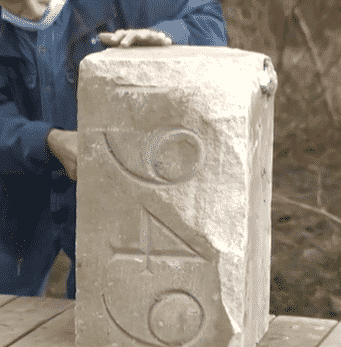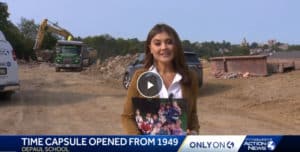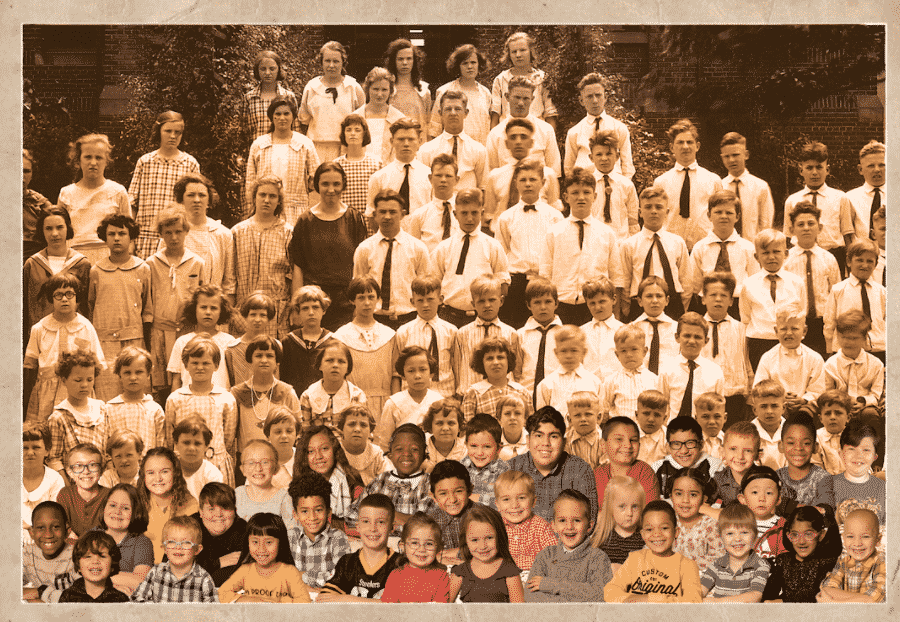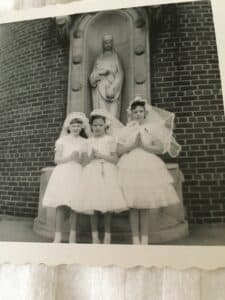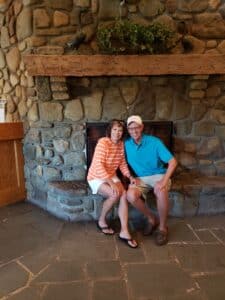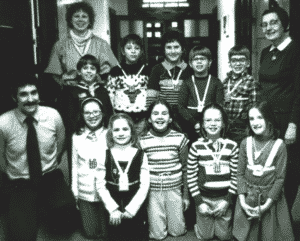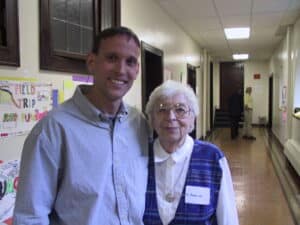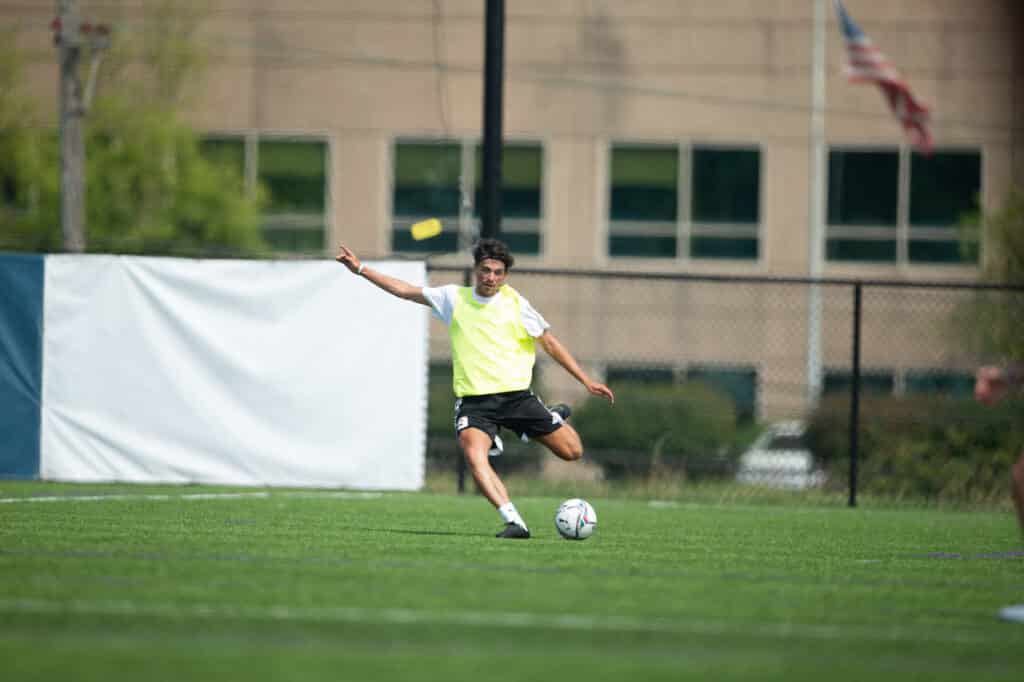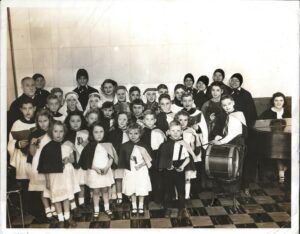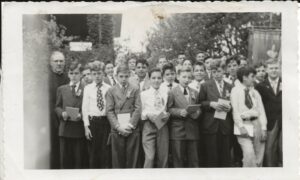"The best and most beautiful things in the world cannot be seen or even touched — they must be felt with the heart."
-Helen Keller
-

Mid 1800s - Early 1900s Deaf and Blind Schools Begin to Open in Pittsburgh
Pittsburgh becomes a thriving city with the growth of the iron and steel industry. As a result of the city’s growing population and crowded neighborhoods, an increase in additional educational needs among children arises. Various schools throughout the Pittsburgh area that service children who are deaf or hard of hearing begin to open. _____ Photo…
Mid 1800s - Early 1900s -

Early 1900s Sisters of Charity Enroll in Higher Deaf Education Course
Bishop John F. Regis Canevin of the Diocese of Pittsburgh recognized a need for a Catholic institution in the state of Pennsylvania to serve both the educational and spiritual needs of children who were deaf or hard of hearing. He approached the Sisters of Charity of Seton Hill with his idea. In turn, the Sisters…
Early 1900s -

1907 Bishop Canevin Leases Temporary Location
Bishop Canevin leased a three-story house in Troy Hill as a temporary location for what would soon become “The Pittsburgh School for the Deaf.” There, he and the Sisters discussed the methodology they learned and developed their program. _____ Photo of the Troy Hill Lappe Mansion – first location of the school.
-

1908 Sisters of Charity Begin Training
The Sisters of Charity soon began their training in order to best serve and teach the children in the hard of hearing and deaf community. They traveled all over the country in search of the best methods to teach their students. Their preparations included training at the Boston School for the Deaf in Massachusetts as…
-

September 7, 1908 School Opens
On this date, the school officially opened with one student. Word of mouth spread amongst the diocese. Enrollment totals reached between 23 – 25 students by the end of the school’s first year. _____ Photo of the early days of DePaul
-

1908-1911 The School Gets Named “The DePaul Institute”
Enrollment at the school continues to grow, as does the need to serve children who are deaf or hard of hearing in all aspects of life. Gradually, a curriculum of various subjects for the students began to develop as the scope of the school widened. In addition to the communication, language, and oral speech skills…
-

1911 New Facility Built in Mt. Lebanon
Because of the school’s growing population and services, the Diocese of Pittsburgh purchased land in Mt. Lebanon and built a new educational and residential facility in 1911. Students could now live at The DePaul Institute and work on their listening and speaking during all waking hours. _____ Photo of DePaul Students in the years 1915-1916…
-

Mid 1920s Father Coakley – DePaul’s First Superintendent
It was during this time that the school’s first superintendent, Fr. Coakley, played a pivotal role in the future learning advancements of DePaul. After his service in Europe as a World War I U.S. Army Chaplain, he committed himself to the various needs of the school. In an effort to provide the students of DePaul…
1920s -

1925 New Chapel Built on Campus
Bishop Hugh C. Boyle dedicated the new Saint Ann Chapel built on campus. The addition of a new chapel allowed for structural rearrangements in the classroom and with the curriculum. The Sisters and lay teachers began to utilize musical activities such as choral groups, folk songs, singing games, and rhythm bands to further the students’…
-

1936 Harmonica Band was Organized
In 1936, the Harmonica Band was organized and grew out of the Rhythm Band organized by Fr. Doherty. The band received much recognition over the years as they participated in the 1936 Music Festival at Forbes Field, traveled to New York per the request of Robert Ripley from “Ripley’s Believe it or Not” show, performed…
1930s -

1940 Sister Teresa Vincent Formed Operational Clinic Service
In an effort to service the present community needs in the Pittsburgh area and find new ways to reach children in need of the DePaul Institute’s services, Sister Teresa Vincent formed a Saturday operational clinic service to help distinguish the differences between hearing loss and developmental delays among younger children. This was just one early…
1940s -

1945 Saturday Speech Classes Offered
In 1945, the school began to see a growing language need for students and began to offer Saturday Speech classes. This was in an effort to serve the continuing needs of students and children in need of additional support. _____ Photo of child lip reading with Sister Justina
-

1948 The Blind and Sight Conservation Classes Developed
As the school continued to expand and evolve, the Sisters realized there was a growing necessity to service students with additional needs. Sister Francis Louise Honeychuck and Sister Justina Dreistadt developed The Blind and Sight Conservation Classes at DePaul Institute. The classes used Braille textbooks and lessons to assist students at the DePaul Institute who…
-

1949 Our Lady of Victory Hall Was Built
The DePaul Institute campus grows and expands. The Our Lady of Victory Hall was built and becomes the location of the new Blind and Sight Conservation Classes created by Sister Francis Louise. _____ Photo of Sister Francis Louise with a Blind Student
-

1949 Time Capsule Created
With the addition of a new building, the idea of a time capsule for future generations to unravel was created and placed inside a cornerstone brick. Inside were letters, photos, coins, religious medals, and more. 70 years later, this time capsule would be opened with various alumni and staff members present! These items from the…
-

1950 Mobile Clinic Created
A “Mobile Clinic” from DePaul was created and traveled around the Diocesan counties to provide hearing tests and referrals for families and children. This endeavor was developed due to the success of Sister Teresa Vincent’s clinic services around that time. _____ Photo of Sisters meeting with parents about school services
1950s -

Early 1970s “Share-A-Home” Program Created
The DePaul Institute closed its residential program under the leadership of Sister Philomena Mannion and became a day school. During this time, a “Share-A-Home” program was created to host residential DePaul students during this transition. This allowed students who lived too far away for a daily commute to continue their education at DePaul School when…
1970s -

1973 DePaul Becomes an “Approved Private School”
The Sisters of Charity have always had a mindset of service for any students or families that walked through DePaul’s doors and never wanted to charge for services. However, as additional funds were needed with technological advancements increasing, The DePaul Institute undergoes the process to become an “Approved Private School” and becomes approved to receive…
-

2002-2003 DePaul Moves to New Location
With the introduction of IDEA and ADA as well as the need for greater building repairs, The Bishop of Pittsburgh decided to move the DePaul Insititute to a new location. The programs grew and prospered on the Brookline site until the summer of 2002, when DePaul moved to its current location in the former Sacred…
2000s -

2004 DePaul Changes Its Name
The DePaul Institute changes its name to DePaul School for Hearing and Speech.
-

May 19, 2014 DePaul School for Hearing and Speech Day
On May 19, 2014, a Pittsburgh City Council Proclamation declared that May 19th would be known as “DePaul School for Hearing and Speech Day” in the City of Pittsburgh. _____ Scanned image of the Pittsburgh City Council Proclamation
-

September 16, 2020 Time Capsule Opened
The time capsule concealed in the Our Lady of Victory Hall cornerstone from 1949 is opened and several artifacts are discovered within. Watch the story unfold in the video link!
-

Present Day DePaul School Today
DePaul School for Hearing and Speech is one of just 41 schools in the U.S. that teaches Listening and Spoken Language (LSL) education to hard of hearing or deaf children. DePaul School for Hearing and Speech is the only LSL school in the West Virginia tri-state area and Western Pennsylvania, Ohio. Additionally, DePaul School for…
"The future belongs to those who believe in the beauty of their dreams."
-Eleanor Roosevelt
Arlene Miller
Class of 1963
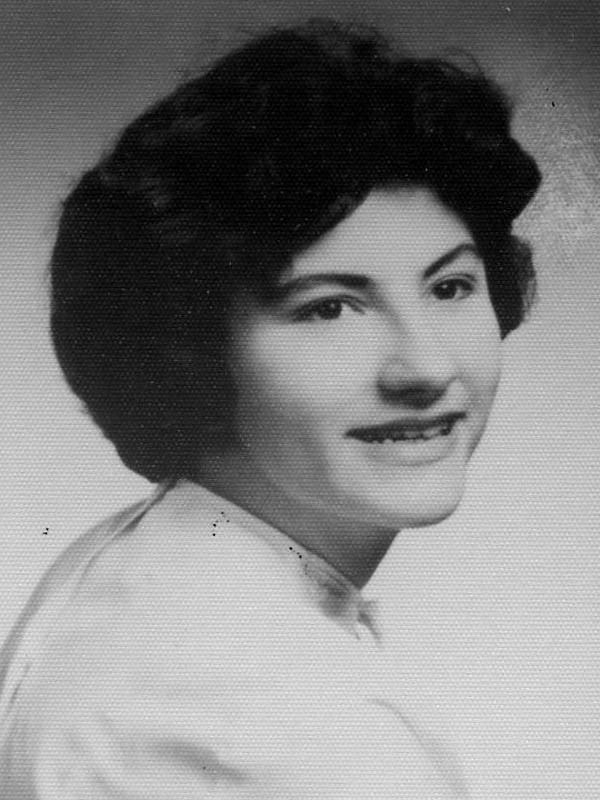
*Click on the image to read more about Arlene.
Margie Parker
Class of 1957
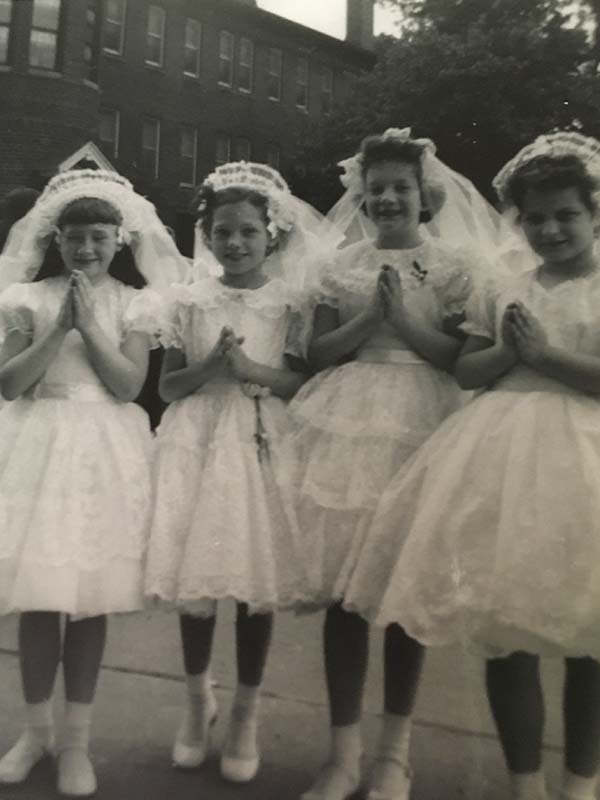
*Click on the image to read more about Margie.
Robert Walker
Class of 1968
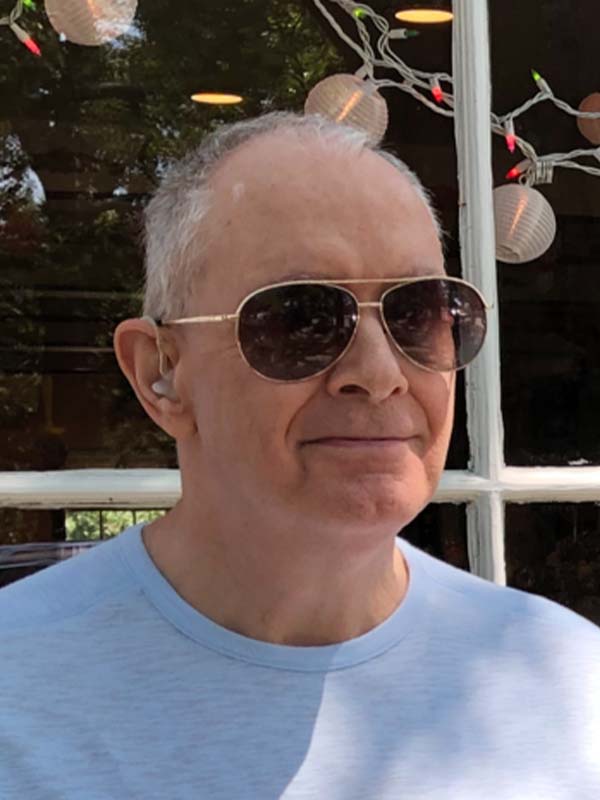
*Click on the image to read more about Robert.
Donna (Dawn) Chock
Class of 1960
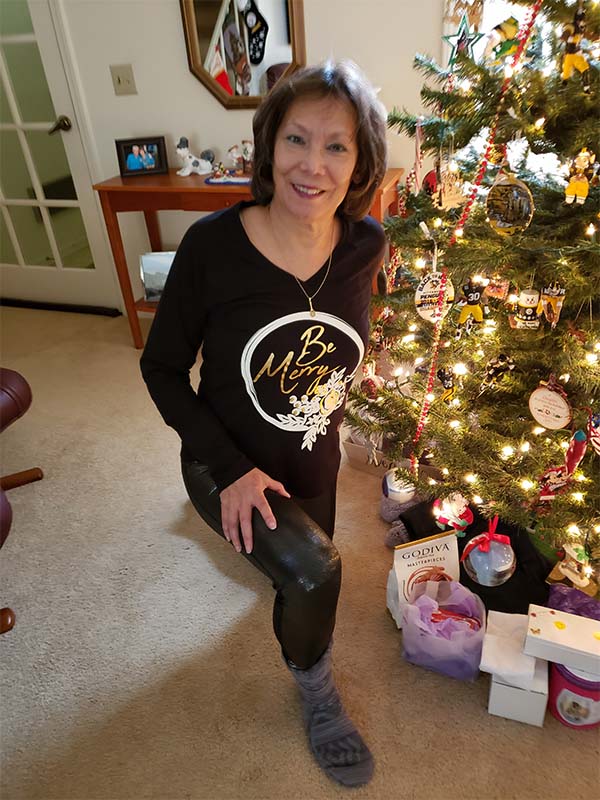
*Click on the image to read more about Dawn.
Michael J. Prezioso
Class of 1984
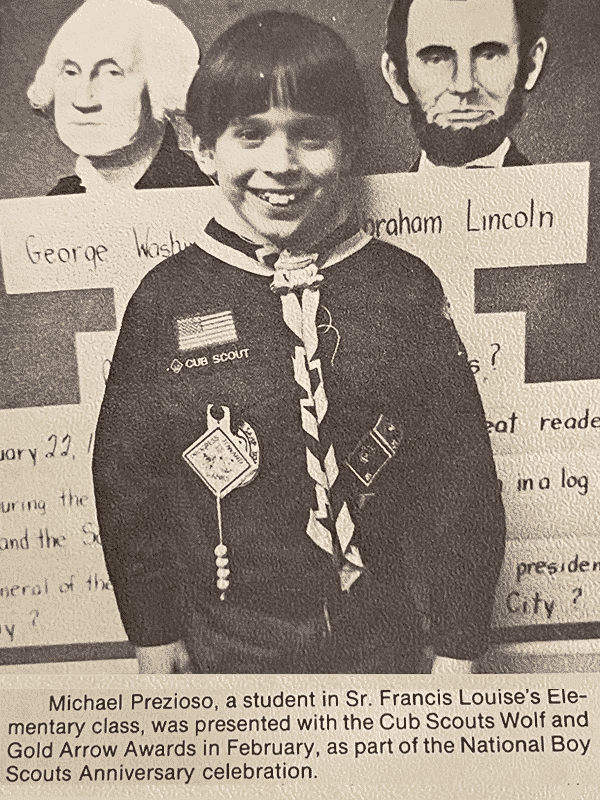
*Click on the image to read more about Michael.
Charmaine Lydon-Betjemann
Class of 1980
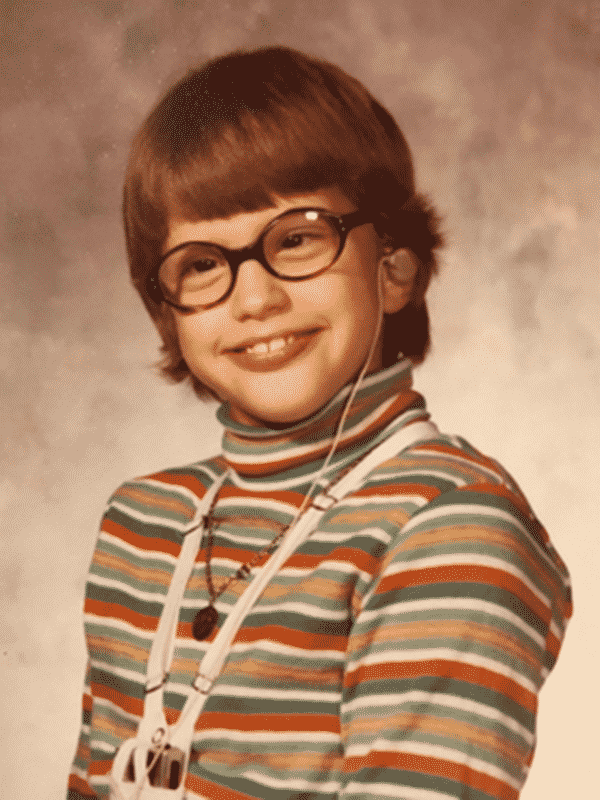
*Click on the image to read more about Charmaine.
Tyler Stack
Class of 2013

*Click on the image to read more about Tyler.
Heidi A. Kobulnicky
Class of 2001

*Click on the image to read more about Heidi.
John Paczan
Class of 1953
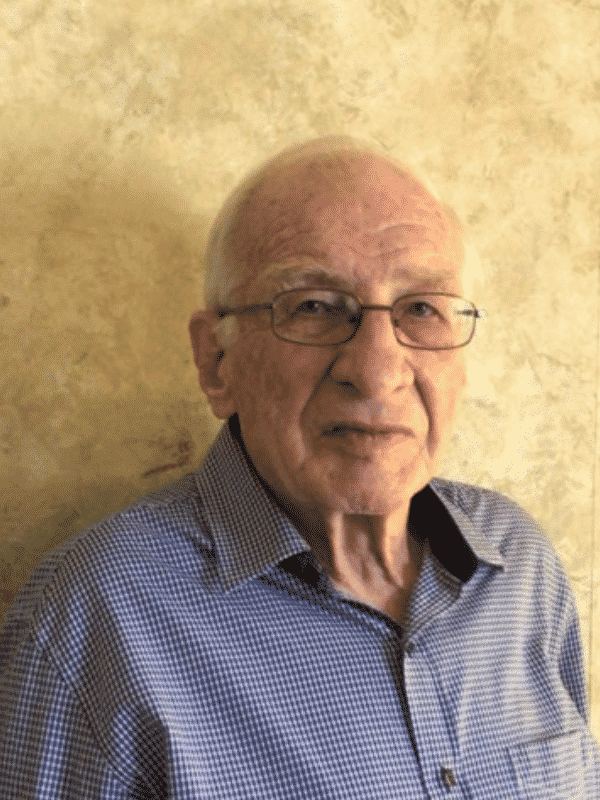
*Click on the image to read more about John.
Caitlin Baird
Class of 2002
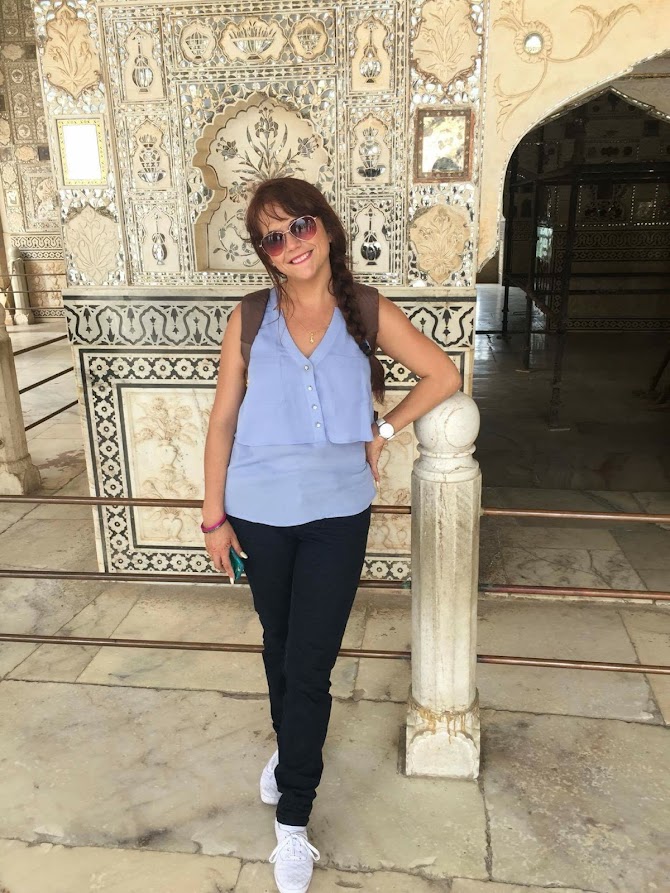
*Click on the image to read more about Caitlin.

